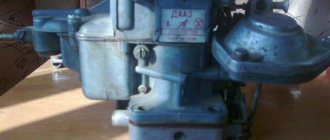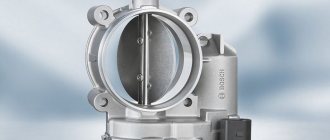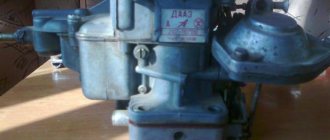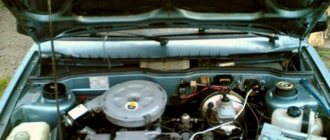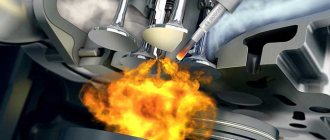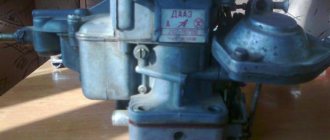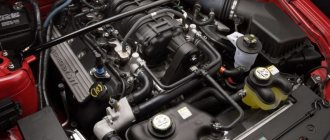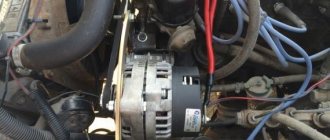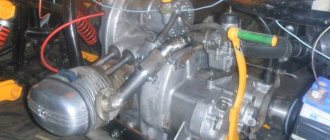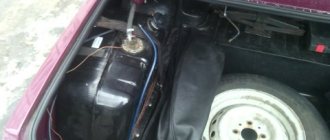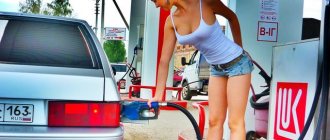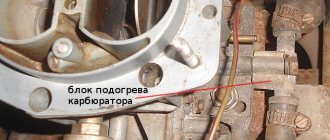The question of comparison in terms of “which is better” between injection and carburetor fuel supply has not been raised for a long time. There are fewer cars equipped with a carburetor every day, and new ones are no longer produced.
Novice motorists do not understand the structure of a car engine, fuel supply system, etc. The terms “carburetor” and “injector” mean nothing to them. Inexperienced motorists do not see the difference between their purposes. Those who buy a new car no longer face the question of which is better: a carburetor or an injector. They don’t need to know anything about the carburetor, since it has long been discontinued and does not pass the Euro-3 environmental standard.
This is associated with the massive transition of automakers to cars with an injection power system. The requirements for exhaust gas cleaning are becoming higher, and the carburetor cannot meet them.
But this is not the only reason for abandoning carburetors. Compared to an injector, it has many disadvantages and few advantages.
Carburetor Features
The carburetor system is simpler in design and easier to maintain. An experienced motorist can independently repair its components: the carburetor and mechanical fuel pump. Repair kits for mounted units of domestic engines can be purchased at any car market and in most auto parts stores. In order to remove any of these components and replace failed parts, all you need is a simple tool, care and a little time.
The most difficult procedure in servicing a VAZ carburetor is adjusting the float and jets. This requires some experience. Adjustment of this unit is required not only after repairs and scheduled maintenance, but also quite often during operation, which causes additional trouble for car owners. However, from the point of view of most drivers, the main thing that distinguishes a carburetor from an injector is the ability to repair it yourself in any wilderness. In fact, it doesn’t matter what the engine thrust and fuel consumption will be if there is a breakdown on a trip - the main thing is to get to civilization, where you can get the necessary help.
Pros and cons of carburetor engines
The design of a simple carburetor
The main advantage of a carburetor is ease of maintenance. To adjust the composition of the working mixture, just read the simple manual. At the same time, the carburetor, correctly adjusted once, is able to operate without failures for a long time. To repair a fuel mixer, you don’t need expensive tools and equipment; a few screwdrivers and wrenches are enough. All work can be done right in the garage, without going to a car service. Here lies a significant difference between an injector and a carburetor, because problems with the injector are no longer so easy to fix.
A carburetor car can be filled with fuel with low quality indicators, because it is almost insensitive to the presence of impurities. The only consequence of using low quality fuel is clogging of the jets, but they can be easily cleaned or purged.
An important advantage of carburetor units is increased engine response. The operating mode of the motor changes quickly, without jerking. A carburetor car is easier to overcome steep descents and drive off-road.
The disadvantages of a carburetor include:
- increased formation of harmful substances in exhaust gases;
- high sensitivity to temperature changes;
- irrational gasoline consumption.
The carburetor is reliable and easy to maintain, but its shortcomings are too significant and offset the list of advantages.
Composition of the injection system
The engine fuel injection system is technically more advanced and reliable. But the presence of a larger number of components, their complexity and dependence on each other, complicate diagnostics and independent repairs, especially on the road.
It includes:
- electric fuel pump;
- distribution ramp;
- injectors (nozzles);
- electronic control unit;
- a group of sensors (throttle position, lambda probe, air flow, detonation).
The electronic injection control unit on VAZ cars also uses signals from sensors that are also present on a carburetor engine, for example, temperature, hall, etc. It’s just that in an engine with a carburetor, the functionality of these devices is no longer related to the fuel supply.
Selecting the optimal fuel supply system
Thinking about the difference between an injector and a carburetor, many motorists come to the conclusion that the electronic system is much more reliable. However, re-equipping any car is not economically profitable and will only lead to unnecessary costs. The decision to choose a more economical system is important when buying a car. It’s quite easy to understand the difference between an injector and a carburetor, and such knowledge will definitely come in handy.
The carburetor has already served its useful life in the modern car market. Despite its advantages, the use of an injector is most effective and meets all environmental requirements. Carburetor engines are used mainly on older cars, but this technology has proven itself and does not need modification. The use of an injector has considerable advantages and this system is installed without choice in any new car.
Technological features in operation
The technological difference between a carburetor and an injector lies in the method of supplying fuel to the combustion chambers. In a carburetor system, fuel is delivered to the cylinders using the suction principle. The piston, moving on the intake stroke, creates a vacuum in the cylinder and draws the air-fuel mixture through the intake manifold from the carburetor. Carburetor adjustment is responsible for the quality of the mixture. The main drawback is that the quality of the fuel mixture is the same in all engine operating modes, with the exception of choke during warm-up mode.
In an injection system, fuel is injected under pressure either into the intake manifold or directly into the engine cylinders, forming an air-fuel mixture at the time of injection. The fuel is clearly dosed by an electronic control system depending on the mode and operating conditions of the power unit. Moreover, the control unit adjusts injection and ignition timing. Together, this results in increased power, increased torque and fuel savings. Simply put, the car becomes more responsive and faster with less fuel consumption.
You can feel the difference between carburete and injector on Niva cars very clearly. With almost identical performance indicators declared by the manufacturer, in practice the injection Niva is more playful and responsive. And if fuel consumption when driving on a flat road differs slightly (up to 0.5 liters), then when driving on mountain or dirt roads the gap increases significantly. But this car is an SUV.
Another undoubted advantage of an injection engine is the stability of its operation. System adjustment is rarely required. All its components have a long service life and are quite reliable.
However, the injector has its own disadvantages:
- higher cost of maintenance and components for repair;
- special equipment is required for diagnostics, repairs and equipment, which narrows the independent capabilities of the car enthusiast;
- more complex diagnostics;
- When driving frequently with a small amount of gasoline in the tank, the submersible fuel pump fails.
As factory equipped with an injector, VAZ cars are equipped with submersible electric fuel pumps in the tank.
Such pumps are cooled by gasoline, and when the tank is almost empty, they overheat and fail. The first sign of a pump malfunction is its louder operation (humming). To avoid overheating of the electric fuel pump, drivers have to constantly maintain a certain minimum level of fuel in the tank, thus reducing its operating volume. When installing injectors on a VAZ themselves, some craftsmen use an externally installed electric fuel pump. In practice, this option is no better than the previous one: it is more difficult to fill the system if you reach an empty tank. And if you pump gasoline with a “dry” electric pump, it will quickly become unusable.
Which is faster, carburetor or injector?
At the injector
there are a number of advantages: power - a car with such a fuel injection system is 5-10% more powerful than a carburetor;
efficiency - thanks to the electronic system for calculating the composition of the working mixture, the injector
10-30% more economical than
the carburetor
Interesting materials:
How to display Alice's shortcut on the home screen? How to display FPS on the screen? How to display Yandex on the screen? How to display the toolbar in AutoCAD? How to display the weather on Samsung screen? How to display the dog symbol on the screen? How to display battery charge? How to display a separate image on a second screen? How to display weather on Samsung lock screen? How to lock the screen so it doesn't move?
Nuances of injector diagnostics
The difficulty of diagnosing a VAZ injection system lies in the fact that its operation is affected by all components and it is not so easy to understand what exactly is malfunctioning:
- nozzle;
- any sensor;
- pressure regulator;
- Control block.
The catch may lie in the fuel pump: the mere presence of fuel in the rail is not a sufficient condition for the injector to operate - it is necessary that the pump provide a certain performance and pressure. Check the indicated indicators using a volumetric flask and a pressure gauge.
Unlike a carburetor, the quality of operation of the injection system is influenced by the condition of the vehicle's electrical wiring. Oxidized wiring connectors and sensors can cause failures. And if instead of 12V only 8V reaches the terminals of the electric pump, then there can be no talk of any of its performance, and therefore normal operation of the engine.
What are both systems responsible for?
This point is specifically for beginners - but what are both of these systems really responsible for? Friends, it's very simple. In fact, they are needed to “power” our engines, namely to create an air-fuel mixture that burns in our engine cylinders
.
The only difference is that one system is mechanical (there are practically no electronics), but the second, on the contrary, is electronic (sensors, electronic pumps, etc. are responsible for everything)
The mechanical system is also known as a carburetor.
Electronic – also known as an injector.
Well, now in more detail.
The influence of gasoline quality on fuel systems
Both injection and carburetor engines are sensitive to the quality of gasoline. Quite often, after refueling with gasoline of a different quality (either worse or better), owners of carburetor cars turn to a specialist for adjustment. Returning to fuel of the same quality again entails adjustment.
For an engine equipped with an injector, the control unit, receiving information from sensors, independently adjusts the fuel supply. The driver, of course, can feel a change in engine thrust or notice fluctuations in fuel consumption, but this will not disrupt his planned trips. So, from the point of view of the quality of the fuel being filled, an injector is better than a carburetor (an outright surrogate does not count, because it will ruin any engine).
Historical excursion
The first liquid carburetor operating on the principle of evaporation was created in 1872, according to other sources - in 1876. And 20 years later (1893), the Italian Donat Banki developed a device based on the spraying of gasoline. Gradually improving and acquiring various systems, it existed on automobile engines for almost a century.
The injector's pedigree dates back to the same times. As early as 1902, the engines of the French engineer and racing driver Levasseur contained some elements of mechanical fuel injection.
The idea was borrowed by aviation designers interested in the fact that the operation of the injector does not depend on gravity. By the end of the Second World War, injection engines appeared on some aircraft of the warring parties, including the USSR.
The Mercedes-Benz 300SL (“Seagull Wing”) received mechanical forced injection for the first time on a production car in 1954. And electronically controlled fuel injection was tested by the Italians even before the war.
Since the 80s of the last century, injection gasoline engines have become widespread due to the advent of affordable electronic components for creating electronic engine control systems . Carburetor engines are practically never found on modern cars, except for some racing cars.
Is it worth converting a carburetor car to an injection car?
Thinking about what is better, a carburetor or an injector, some owners of VAZ cars are thinking about converting their vehicles. Models 2107 and 2109 are most often converted. It is important to understand the driver’s motive here. If the purpose of re-equipment is to save money, then this is a utopia. When purchasing a fuel-injected car, its cost does not differ significantly from that of a carburetor.
Independent re-equipment will cost a pretty penny, since you need to buy more than 50 very expensive system elements. For all this you need to pay a lot and immediately. And the car will save a little bit over a long period. Depending on who drives how much, the payback period may not come very soon, or may not come at all.
But if the motive for the conversion is the desire to get a more dynamic and reliable car at any time of the year, especially one used in densely populated areas, then it’s worth it. On busy city streets, the carburetor VAZ 2109 is inferior in maneuverability to its injection counterpart. In winter, while the weakly heated carburetor starts moving at a traffic light, the fuel-injected car will already be at the next intersection.
Choosing between two types
Oddly enough, it is impossible to say for sure which is better: an injector or a carburetor. In this matter, you need to focus on your preferences and what exactly you want to get from the car. If you live far from the city and a service station, then it is much more practical to give preference to a used car with a classic power system. In the event of a breakdown, using the simplest tools and experience, you will quickly fix the breakdown and move on. And if you don’t have skills in such repairs, they will quickly appear, since there is nothing super complicated about it.
But if the injector breaks down, there is only one way - to a service station, where a professional diagnostician can use a computer to find the fault.
As a rule, such stations are present in fairly large cities, and if the breakdown is serious, then there is a possibility that the car will not reach its destination under its own power. In this regard, the advantage of a carburetor is obvious, but this nuance is relevant only for those who often travel far from the city or even live in the wilderness.
If you are an average city resident, then you don’t need more than reliability and maintainability. Here, car services are located at every step and there is no particular reason to worry. Therefore, buying a classic car and suffering in the morning starting and warming up the engine is definitely not worth it. Given the modern pace of life, the morning commute to work will take you too much time.
How to determine carburetor or injection? - question about fortune telling with chamomile
| How to determine carburetor or injection? I don’t boom boom in cars... how can I see this on the top ten?! Is it a carburetor or an injector? If there are nozzles, does that mean it's an injector? THANK YOU VERY MUCH FOR YOUR ANSWERS |
| look under the hood... if the injector means there are a lot of pipes, so to speak... if the carburetor means there is such garbage Egor |
| open the hood Irmina |
| You can look in those passports Svyatoslav |
| First you have to have a car :-) Kotofey |
| carbure, there will be a black round piece of garbage (air filter) and on the injection unit there will be a silver thing behind the engine (this is the receiver) Valera |
| If the air filter is round like a mushroom, then the carb. Healthy stuff, you can't miss it. If in a box, installed separately, then the injector. Eldar |
| find an expertDmitri |
| Open the hood and compare the picture with the book about the top ten, and there is no choke on the injectors. Nadyushka |
| If it is not possible to open the hood, then determine by the year of manufacture. They stopped producing carburetor ones some year (look on the internet). If you don’t have anyone to ask for the year of manufacture, look at the stamps on the car windows, there are markings there...Lora |
| Just open the hood and look, if the air filter housing is round (made of metal), then it’s a carburetor, if it’s plastic, it’s square, then it’s an injector. Tamara |
| get behind the wheel. if there is no suction then the injectorPeter |
| Only Montana gave the correct answer, show it to the specialists, they will explain everything correctly, not for free of courseGalchonok |
| Yes, open the hood and everything is immediately visible... Valeria |
| If there is no frying pan under the hood, then the injector... Anatoly |
| Fortune telling on a chamomile :-) And also by the speed, I started it (on a cold one), if they are immediately large and fall, then the injector. Svetik |
